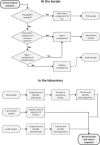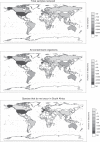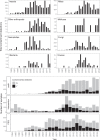Contaminant organisms recorded on plant product imports to South Africa 1994-2019
- PMID: 33727544
- PMCID: PMC7966792
- DOI: 10.1038/s41597-021-00869-z
Contaminant organisms recorded on plant product imports to South Africa 1994-2019
Abstract
Biosecurity interception records are crucial data underlying efforts to predict and manage pest and pathogen introductions. Here we present a dataset containing information on imported plant products inspected by the South African Department of Agriculture's laboratories between 1994 and 2019 and the contaminant organisms found on them. Samples were received from border inspectors as either propagation material (e.g. plants) or material for immediate use (e.g. fruit). Material for immediate use was further divided into two sample categories, depending on if contaminants were seen/suspected by the border official or not: intervention or audit samples. The final dataset consists of 25,279 records, of which 30% tested positive (i.e. had at least one contaminant) and 13% had multiple contaminants. Of the 13,731 recorded contaminants, fungi (41%), mites (37%) and insects (19%) were most common. This dataset provides insight into the suite of taxa transported along the plant import pathway and provides an important resource for analyses of contaminant organisms in international trade, which can inform strategies for risk assessment, pathway management and biosecurity protocols.
Conflict of interest statement
The authors declare no competing interests.
Figures



References
-
- Liebhold AM, Brockerhoff EG, Garrett LJ, Parke JL, Britton KO. Live plant imports: the major pathway for forest insect and pathogen invasions of the US. Front. Ecol. Environ. 2012;10:135–143. doi: 10.1890/110198. - DOI
-
- Singh SK, Hodda M, Ash GJ, Banks NC. Plant-parasitic nematodes as invasive species: characteristics, uncertainty and biosecurity implications. Ann. Appl. Biol. 2013;163:323–350. doi: 10.1111/aab.12030. - DOI
-
- Saccaggi DL, et al. Methods and approaches for the management of arthropod border incursions. Biol. Invasions. 2016;18:1057–1075. doi: 10.1007/s10530-016-1085-6. - DOI
-
- Eschen R, et al. International variation in phytosanitary legislation and regulations governing importation of plants for planting. Environ. Sci. Policy. 2015;51:228–237. doi: 10.1016/j.envsci.2015.04.021. - DOI
Publication types
MeSH terms
LinkOut - more resources
Full Text Sources
Other Literature Sources

